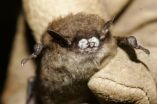Estrogen reduces aggression in breast cancer
2011-02-15
(Press-News.org) A team of researchers at CIC bioGUNE has revealed that oestrogen can reduce the risk of breast cancer. Their work shows that oestrogen is capable of reducing the number of breast cancer stem cells, which may explain the lower aggression of the tumour and, as a consequence, the possibility of a better prognosis. The project was published in Breast Cancer Research and Treatment and the team will present the results under the auspices of the International Conference on Breast Cancer to be held in Madrid. The research combined the use of human samples and laboratory cell lines.
The identification of cancer stem cells (or tumour-initiating cells) has opened up a new perspective on breast cancer, with new hopes for treatment in the future. To date treatment against cancer was designed to reduce the mass of the tumour. Nevertheless, what has recently been discovered is that, while traditional treatment is capable of killing most of the cell mass of the tumour, the cancer stem cells are more resistant to common treatment such as chemotherapy and radiation. Thus, in order to cure the cancer with greater efficacy and definitively, it is important to find ways to eliminate cancer stem cells as well.
Oestrogen is a hormone which is not without its complexity; on the one hand it is essential for the normal development and functioning of the breast and, on the other, this same hormone induces the proliferation of cancer cells once the breast tumour has appeared, i.e. oestrogen is also a risk factor in breast cancer. However, nothing or little has been known until now about the effect of oestrogen on the tumour-initiating cells.
Over recent years highly important steps in the fight against breast cancer have been taken, notable enhancing its diagnosis, prognosis and possible treatment, giving rise to a very considerable increase in the survival rates of patients. It had also been proposed that the number of cancerous stem cells is correlated with the aggressiveness of the tumour: The greater the percentage of breast cancer stem cells, the greater the aggressiveness and the worse, thereby, its prognosis.
"To our surprise, what we have seen is that oestrogen reduces the proportion of breast stem cells which means a mechanism for explaining this better prognosis observed with tumours that express the oestrogen receptor. That is, those tumours expressing the oestrogen receptor are less aggressive, better differentiated and thus have a better prognosis", explained Ms María Vivanco, leader of the research team.
Ms Vivanco believes that this study presents a new functional aspect of oestrogen, due to its capacity for acting in a different way depending on cellular type.
In the opinion of the CIC bioGUNE researcher, this study "has set out the molecular bases for understanding the direct effect of oestrogen on the proportion of stem cells, whether in healthy or cancerous tissue and the fact that the oestrogen receptor is an excellent prognostic marker". Moreover, this means there is an explanation for a number of clinical observations, for example: the high levels of oestrogen in the blood of postmenopausal patients being associated with less aggressive tumours; the fact that little-differentiated tumours contain more cancerous stem cells, in turn associated with the degree of the tumour, the absence of the oestrogen receptor and low survival rate; and the observed benefit of lactation attributed to a greater differentiation in the breast.
The researchers consider that the new study represents a highly important step, opening new doors to developing tools for the prevention of breast cancer.
INFORMATION: END
ELSE PRESS RELEASES FROM THIS DATE:
2011-02-15
Atrial Fibrillation (AF) is the most common cardiac arrhythmia (abnormal heart rhythm). Its name comes from the fibrillating (i.e., quivering) of the heart muscles of the atria, instead of a coordinated contraction. The result is an irregular heartbeat, which may occur in episodes lasting from minutes to weeks, or it could occur all the time for years. Atrial fibrillation alone is not in itself generally life-threatening, but it may result in palpitations, fainting, chest pain, or congestive heart failure.
There is no doubt that heavy alcohol intake and binge drinking ...
2011-02-15
The objective of this research is to understand how cooperation works in nature in general, and among humans in particular. "From the evolutionary point of view it is very difficult to understand why we would help others when what interests us is helping ourselves," explained the authors of this study, which was recently published in the journal PLoS ONE. One of the most striking conclusions drawn is that there are different types of people: those who always try to help their neighbors (around 5 percent), those who never do so (35 percent), and others who cooperate depending ...
2011-02-15
(Baltimore, MD) – Two research studies published today in Neurology®, the medical journal of the American Academy of Neurology, found markers for measuring the ability of children with Attention Deficit Hyperactivity Disorder (ADHD) to control impulsive movements, which may reveal insights into the neurobiology of ADHD, inform prognosis and guide treatments.
In one of two studies conducted by researchers at the Kennedy Krieger Institute in Baltimore, MD and the Cincinnati Children's Hospital Medical Center, children with ADHD performed a finger-tapping task. Any unintentional ...
2011-02-15
Scientists aboard the Royal Research Ship James Cook have discovered a new set of deep-sea volcanic vents in the chilly waters of the Southern Ocean. The discovery is the fourth made by the research team in three years, which suggests that deep-sea vents may be more common in our oceans than previously thought.
Using an underwater camera system, the researchers saw slender mineral spires three metres tall, with shimmering hot water gushing from their peaks, and gossamer-like white mats of bacteria coating their sides. The vents are at a depth of 520 metres in a newly-discovered ...
2011-02-15
Culling will not stop the spread of a deadly fungus that is threatening to wipe out hibernating bats in North America, according to a new mathematical model.
White-nose syndrome, which is estimated to have killed over a million bats in a three year period, is probably caused by a newly discovered cold-adapted fungus, Geomyces destructans. The new model examines how WNS is passed from bat to bat and concludes that culling would not work because of the complexity of bat life history and because the fungal pathogen occurs in the caves and mines where the bats live.
"Because ...
2011-02-15
New research shows a link between use of two pesticides, rotenone and paraquat, and Parkinson's disease. People who used either pesticide developed Parkinson's disease approximately 2.5 times more often than non-users.
The study was a collaborative effort conducted by researchers at the National Institute of Environmental Health Sciences (NIEHS), which is part of the National Institutes of Health, and the Parkinson's Institute and Clinical Center in Sunnyvale, Calif.
"Rotenone directly inhibits the function of the mitochondria, the structure responsible for making ...
2011-02-15
This release is available in French.
Montreal, February 14, 2010 – A new study has confirmed an old adage: A family that plays together stays together. Researchers from Concordia University and Wilfrid Laurier University examined the ways grandparents can maintain close ties with their adult grandchildren. True to the old maxim, recreation emerged as the glue sealing intergenerational bonds.
"Leisure is vital in the formation of bonds that last from generation to generation," says lead author Shannon Hebblethwaite, a professor in Concordia University's Department ...
2011-02-15
Tampa, Fla. (Feb. 14, 2011) – Transplanting autologous renal progenitor cells (RPCs), (kidney stem cells derived from self-donors), into rat models with kidney damage from pyelonephritis - a type of urinary infection that has reached the kidney - has been found to improve kidney structure and function.
The study, authored by a research team from the Tehran University of Medical Sciences, is published in the current issue of Cell Medicine [1(3)] and is freely available on-line at: http://www.ingentaconnect.com/content/cog/cm .
"Advancements in stem cell therapies and ...
2011-02-15
Researchers at the Georgia Institute of Technology and the Northeast Georgia Medical Center are one step closer to their goal of automating the management of sedation in hospital intensive care units (ICUs). They have developed control algorithms that use clinical data to accurately determine a patient's level of sedation and can notify medical staff if there is a change in the level.
"ICU nurses have one of the most task-laden jobs in medicine and typically take care of multiple patients at the same time, so if we can use control system technology to automate the task ...
2011-02-15
ANN ARBOR, Mich.---Scientists have discovered a molecular assistant called Spy that helps bacteria excel at producing proteins for medical and industrial purposes.
Bacteria are widely used to manufacture proteins used in medicine and industry, but the bugs often bungle the job. Many proteins fall apart and get cut up inside the bacteria before they can be harvested. Others collapse into useless tangles instead of folding properly, as they must in order to function normally.
A research team led by James Bardwell, who is a professor of molecular, cellular and developmental ...
LAST 30 PRESS RELEASES:
[Press-News.org] Estrogen reduces aggression in breast cancer





